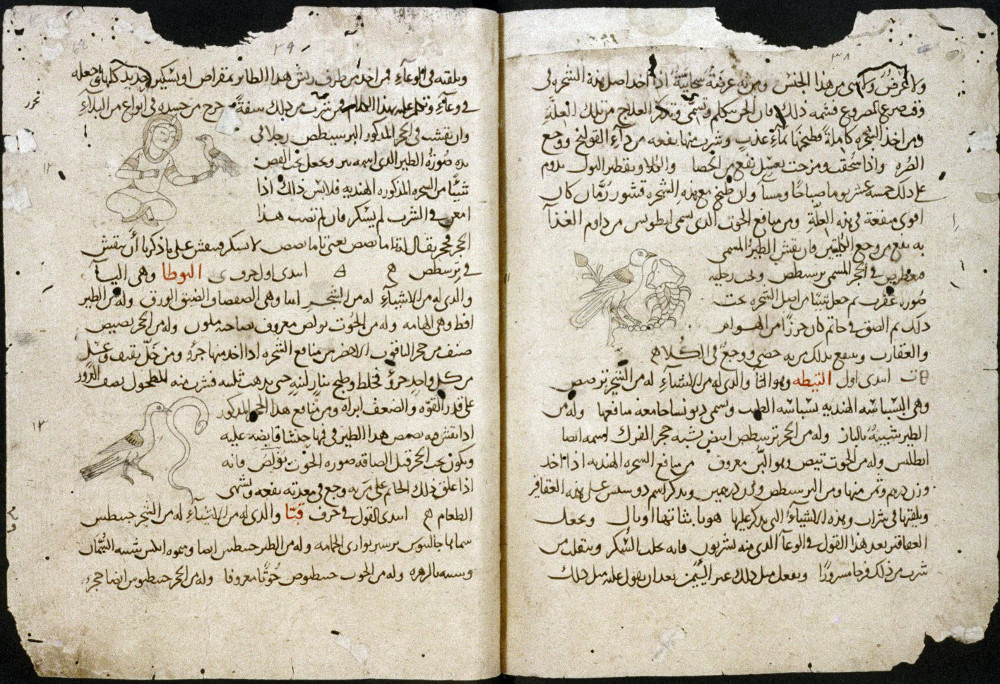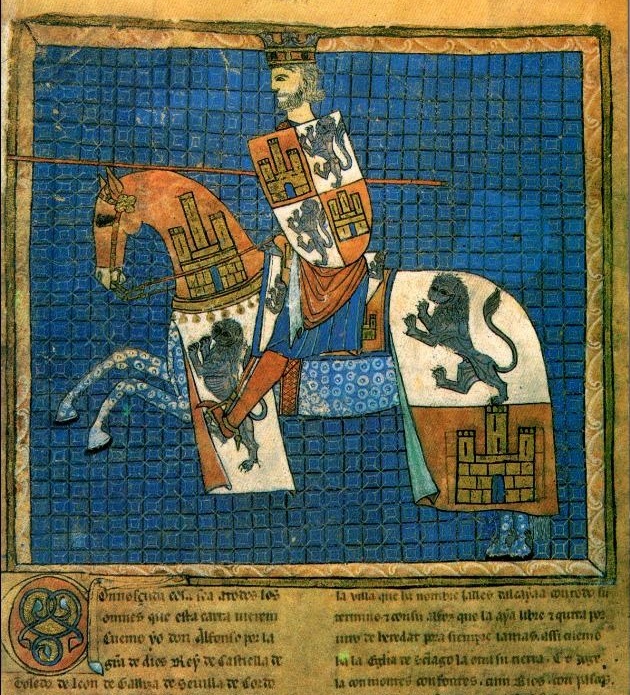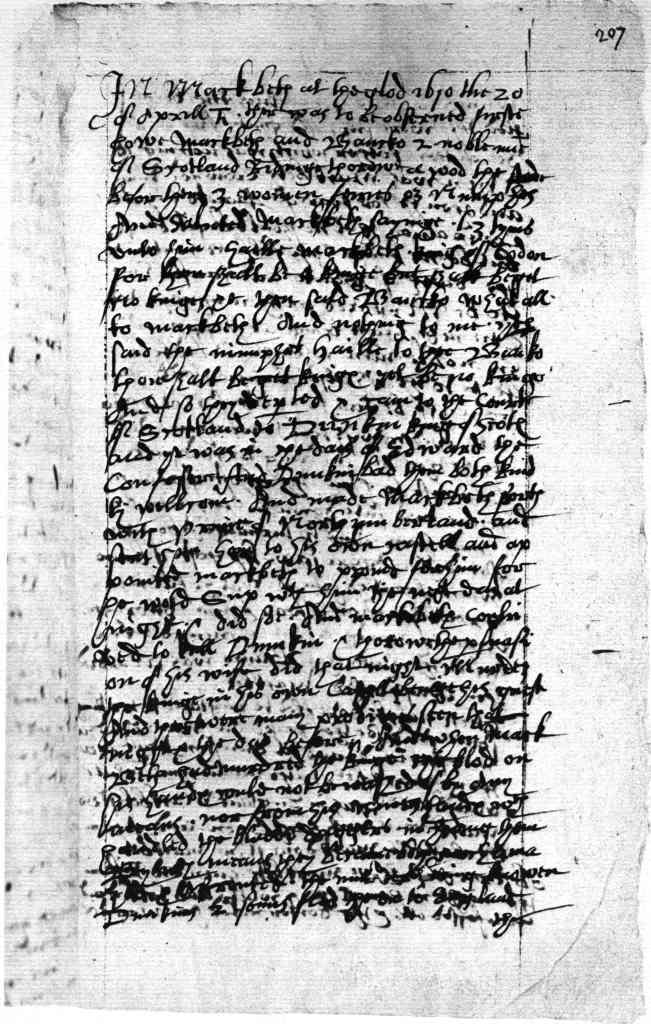|
Picatrix
''Picatrix'' is the Latin name used today for a 400-page book of magic and astrology originally written in Arabic under the title ''GhÄyat al-įø¤akÄ«m'' ( ar, ŲŗŲ§ŁŲ© Ų§ŁŲŁŁŁ ), which most scholars assume was originally written in the middle of the 11th century, though an argument for composition in the first half of the 10th century has been made. The Arabic title translates as ''The Aim of the Sage'' or ''The Goal of The Wise''. The Arabic work was translated into Spanish and then into Latin during the 13th century, at which time it got the Latin title ''Picatrix''. The book's title ''Picatrix'' is also sometimes used to refer to the book's author. ''Picatrix'' is a composite work that synthesizes older works on magic and astrology. One of the most influential interpretations suggests it is to be regarded as a "handbook of talismanic magic". Another researcher summarizes it as "the most thorough exposition of celestial magic in Arabic", indicating the sources for the wor ... [...More Info...] [...Related Items...] OR: [Wikipedia] [Google] [Baidu] |
Al-Majriti
Abu al-Qasim Maslama ibn Ahmad al-Majriti ( ar, Ų£ŲØŁ Ų§ŁŁŲ§Ų³Ł Ł Ų³ŁŁ Ų© ŲØŁ Ų£ŲŁ ŲÆ Ų§ŁŁ Ų¬Ų±ŁŲ·Ł: c. 950ā1007), known or Latin as , was an Arab Muslim astronomer, chemist, mathematician, economist and Scholar in Islamic Spain, active during the reign of Al-Hakam II. His full name is Abu āl-QÄsim Maslama ibn Aįø„mad al-FaraįøÄ« al-įø¤Äsib al-MajĢ²rÄ«į¹Ä« al-Qurį¹ubÄ« al-AndalusÄ«. Achievements Al-MajrÄ«į¹Ä« took part in the translation of Ptolemy's '' Planisphaerium'', improved existing translations of the ''Almagest'', introduced and improved the astronomical tables of Muhammad ibn Musa al-Khwarizmi, aided historians by working out tables to convert Persian dates to Hijri years, and introduced the techniques of surveying and triangulation. According to Said al-Andalusi, he was the best mathematician and astronomer of his time in al-Andalus. He also introduced new surveying methods by working closely with his colleague ibn al-Saffar. He also ... [...More Info...] [...Related Items...] OR: [Wikipedia] [Google] [Baidu] |
Ibn Wahshiyya
( ar, Ų§ŲØŁ ŁŲŲ“ŁŲ©), died , was a Nabataean (Aramaic-speaking, rural Iraqi) agriculturalist, toxicologist, and alchemist born in QussÄ«n, near Kufa in Iraq. He is the author of the '' Nabataean Agriculture'' (), an influential Arabic work on agriculture, astrology, and magic. Already by the end of the tenth century, various works were being falsely attributed to him. One of these spurious writings, the ("The Book of the Desire of the Maddened Lover for the Knowledge of Secret Scripts", perhaps ), is notable as an early proposal that some Egyptian hieroglyphs could be read phonetically, rather than only logographically. Name His full name was . Just like the semi-legendary Jabir ibn Hayyan, he carried the despite the fact that he is not known to have engaged in or to have written anything about Sufism. The is a variant of ( 'Chaldaean'), a term referring to the native inhabitants of Mesopotamia that was also used in Greek, but (given the known -shd-/-ld- variation i ... [...More Info...] [...Related Items...] OR: [Wikipedia] [Google] [Baidu] |
Hermetica
The ''Hermetica'' are texts attributed to the legendary Hellenistic figure Hermes Trismegistus, a syncretic combination of the Greek god Hermes and the Egyptian god Thoth. These texts may vary widely in content and purpose, but are usually subdivided into two main categories, the "technical" and "religio-philosophical" ''Hermetica''. The category of "technical" ''Hermetica'' encompasses a broad variety of treatises dealing with astrology, medicine and pharmacology, alchemy, and magic, the oldest of which were written in Greek and may go back as far as the second or third century BCE. Many of the texts belonging in this category were later translated into Arabic and Latin, often being extensively revised and expanded throughout the centuries. Some of them were also originally written in Arabic, though in many cases their status as an original work or translation remains unclear. These Arabic and Latin Hermetic texts were widely copied throughout the Middle Ages (the most famous ... [...More Info...] [...Related Items...] OR: [Wikipedia] [Google] [Baidu] |
Jabir Ibn Hayyan
AbÅ« MÅ«sÄ JÄbir ibn įø¤ayyÄn (Arabic: , variously called al-į¹¢Å«fÄ«, al-AzdÄ«, al-KÅ«fÄ«, or al-į¹¬Å«sÄ«), died 806ā816, is the purported author of an enormous number and variety of works in Arabic, often called the Jabirian corpus. The works that survive today mainly deal with alchemy and chemistry, magic, and Shi'ite religious philosophy. However, the original scope of the corpus was vast and diverse, covering a wide range of topics ranging from cosmology, astronomy and astrology, over medicine, pharmacology, zoology and botany, to metaphysics, logic, and grammar. Jabir's works contain the oldest known systematic classification of chemical substances, and the oldest known instructions for deriving an inorganic compound ( sal ammoniac or ammonium chloride) from organic substances (such as plants, blood, and hair) by chemical means. His works also contain one of the earliest known versions of the sulfur-mercury theory of metals, a mineralogical theory that would ... [...More Info...] [...Related Items...] OR: [Wikipedia] [Google] [Baidu] |
Alphonso X Of Castile
Alfonso X (also known as the Wise, es, el Sabio; 23 November 1221 ā 4 April 1284) was King of Castile, LeĆ³n and Galicia from 30 May 1252 until his death in 1284. During the election of 1257, a dissident faction chose him to be king of Germany on 1 April. He renounced his claim to Germany in 1275, and in creating an alliance with the Kingdom of England in 1254, his claim on the Duchy of Gascony as well. Alfonso X fostered the development of a cosmopolitan court that encouraged learning. Jews, Muslims, and Christians were encouraged to have prominent roles in his court. As a result of his encouraging the translation of works from Arabic and Latin into the vernacular of Castile, many intellectual changes took place, including the encouragement of the use of Castilian as a primary language of higher learning, science, and law. Alfonso was a prolific author of Galician poetry, such as the '' Cantigas de Santa Maria'', which are equally notable for their musical content as f ... [...More Info...] [...Related Items...] OR: [Wikipedia] [Google] [Baidu] |
Richard Napier
Richard Napier (1559 ā 1 April 1634) was a prominent English astrologer and medical practitioner. Life Also known as Dr Richard Sandy, he was the brother of Sir Robert Napier of Luton Hoo, Bedfordshire. He was a pupil of Simon Forman and inherited his manuscripts, including a copy of the Picatrix (now in the British Library). He became rector of Great Linford, Buckinghamshire''Burke's Extinct and Dormant Baronetcies'' (2nd edition, London: John Russell Smith, 1844/ref> in 1589. Napier was appointed a curate to preach in his place while he practised astrology, which was intertwined with his devout Anglicanism and interest in medicine. He claimed to speak with the archangel Raphael frequently, and occasionally with the archangel Michael. His clients included Emanuel Scrope, 1st Earl of Sunderland as well as the Earl of Bolingbroke and Lord Wentworth, who reputedly protected him from the actions of magistrates. His sister, Mary Napier married Sir Thomas Mydd ... [...More Info...] [...Related Items...] OR: [Wikipedia] [Google] [Baidu] |
Simon Forman
Simon Forman (31 December 1552 – 5 or 12 September 1611) was an Elizabethan astrologer, occultist and herbalist active in London during the reigns of Queen Elizabeth I and James I of England. His reputation, however, was severely tarnished after his death when he was implicated in the plot to kill Sir Thomas Overbury. Astrologers continued to revere him, while writers from Ben Jonson to Nathaniel Hawthorne came to characterize him as either a fool or an evil magician in league with the Devil. Life Forman was born in Quidhampton, Fugglestone St Peter, near Salisbury, Wiltshire, on 31 December 1552. At the age of nine he went to a free school in the Salisbury area but was forced to leave after two years following the death of his father on 31 December 1563. For the next ten years of his life he was apprenticed to Matthew Commin, a local merchant. Commin traded in cloth, salt and herbal medicines, and it was during his time as a young apprentice that Forman started to lea ... [...More Info...] [...Related Items...] OR: [Wikipedia] [Google] [Baidu] |
Tommaso Campanella
Tommaso Campanella (; 5 September 1568 ā 21 May 1639), baptized Giovanni Domenico Campanella, was an Italian Dominican friar, philosopher, theologian, astrologer, and poet. He was prosecuted by the Roman Inquisition for heresy in 1594 and was confined to house arrest for two years. Accused of conspiring against the Spanish rulers of Calabria in 1599, he was tortured and sent to prison, where he spent 27 years. He wrote his most significant works during this time, including '' The City of the Sun'', a utopia describing an egalitarian theocratic society where property is held in common. Biography Born into poverty in Stilo, in the province of Reggio di Calabria in Calabria, southern Italy, Campanella was a child prodigy. Son of an illiterate cobbler, he entered the Dominican Order before the age of fourteen, [...More Info...] [...Related Items...] OR: [Wikipedia] [Google] [Baidu] |
Brethren Of Purity
The Brethren of Purity ( ar, Ų„Ų®ŁŲ§Łā Ų§ŁŲµŁŲ§, IkhwÄn Al-į¹¢afÄ; also The Brethren of Sincerity) were a secret society of Muslim philosophers in Basra, Iraq, in the 9th or 10th century CE. The structure of the organization and the identities of its members have never been clear."Having been hidden within the cloak of secrecy from its very inception, the ''Rasa'il'' have provided many points of contention and have been a constant source of dispute among both Muslim and Western scholars. The identification of the authors, or possibly one author, the place and time of writing and propagation of their works, the nature of the secret brotherhood, the outer manifestation of which comprises the ''Rasa'il'' ā these and many secondary questions have remained without answer." pg 25, Nasr (1964) Their esoteric teachings and philosophy are expounded in an epistolary style in the ''Encyclopedia of the Brethren of Purity'' (''Rasa'il Ikhwan al-safa), a giant compendium of 52 epi ... [...More Info...] [...Related Items...] OR: [Wikipedia] [Google] [Baidu] |
Fritz Saxl
Friedrich "Fritz" Saxl (8 January 1890, Vienna, Austria ā 22 March 1948, Dulwich, London) was the art historian who was the guiding light of the Warburg Institute, especially during the long mental breakdown of its founder, Aby Warburg, whom he succeeded as director. Life and work Saxl studied in his native Vienna under Franz Wickhoff, Julius von Schlosser and Max DvoÅĆ”k, who oversaw his dissertation on Rembrandt. Then in Berlin Saxl studied under Heinrich Wƶlfflin, and spent 1912ā13 researching in Italy for his only major work, a study of medieval illuminated manuscripts with astrological and mythological elements, marrying Elise Bienenfeld in 1913. He served in the Austro-Hungarian army as a lieutenant on the Italian front for the duration of World War I. In 1913 Fritz Saxl had joined what was then the Warburg Library at the Warburg Haus, Hamburg as librarian, and he returned in 1919, also lecturing at the University of Hamburg from 1923. On Warburg's death in 19 ... [...More Info...] [...Related Items...] OR: [Wikipedia] [Google] [Baidu] |
Jean Seznec
Jean Seznec (19 March 1905, in Morlaix ā 22 November 1983, in Oxford) was a historian and mythographer whose most influential book, for English-speaking readers, is ''La Survivance des dieux antiques'' (1940), translated as '' The Survival of the Pagan Gods: Mythological Tradition in Renaissance Humanism and Art'' (1953). Expanding the scope of work by Warburg Institute scholars Fritz Saxl and Erwin Panofsky, Seznec presented a broad view of the transmission of classical representation in Western art. Career Seznec won a place at the French Academy in Rome in 1929, where he studied under Ćmile MĆ¢le, whose methodology influenced his own work. At the outbreak of World War II, Seznec returned from his position in Florence as director of the French Institute, to enlist. His major work was published in 1940, just as France fell. After the war he accepted a position in Romance Languages and Literatures at Harvard University, where he taught from 1941 to 1949. He then was elected Ma ... [...More Info...] [...Related Items...] OR: [Wikipedia] [Google] [Baidu] |
Islamic Mathematics
Mathematics during the Golden Age of Islam, especially during the 9th and 10th centuries, was built on Greek mathematics (Euclid, Archimedes, Apollonius) and Indian mathematics ( Aryabhata, Brahmagupta). Important progress was made, such as full development of the decimal place-value system to include decimal fractions, the first systematised study of algebra, and advances in geometry and trigonometry. Arabic works played an important role in the transmission of mathematics to Europe during the 10thā12th centuries. Concepts Algebra The study of algebra, the name of which is derived from the Arabic word meaning completion or "reunion of broken parts", flourished during the Islamic golden age. Muhammad ibn Musa al-Khwarizmi, a Persian scholar in the House of Wisdom in Baghdad was the founder of algebra, is along with the Greek mathematician Diophantus, known as the father of algebra. In his book '' The Compendious Book on Calculation by Completion and Balancing' ... [...More Info...] [...Related Items...] OR: [Wikipedia] [Google] [Baidu] |








